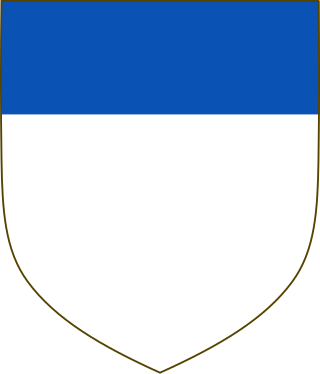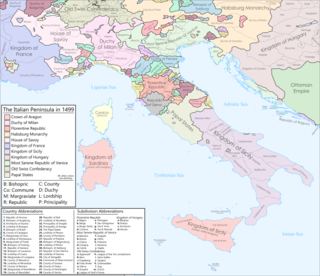Otto was count of Savoy from around 1051 until his death. Through marriage to Adelaide, the heiress of Ulric Manfred II, he also administered the march of Susa from around 1046 until his death.

Peter I was count of Savoy and margrave of Turin jointly with his brother Amadeus II of Savoy from c. 1060 to 1078. He ruled only nominally, as true power was in the hands of his mother, Adelaide of Susa.
Amadeus II was the count of Savoy from 1078 to 1080. His life is obscure and few documents mention him. During his rule, he was overshadowed by his mother, but he had good relations with the papacy and, for a time, the Holy Roman emperor.
Humbert III, surnamed the Blessed, was Count of Savoy from 1148 to 1189. His parents were Amadeus III of Savoy and Mahaut of Albon. He ceded rights and benefits to monasteries and played a decisive role in the organisation of Hautecombe Abbey. It is said that he would rather have been a monk than a sovereign. On the death of his third wife, he retired to Hautecombe, but then changed his mind and, by his fourth wife finally had a son, Thomas. He sided with the Guelph party of Pope Alexander III against the Ghibelline emperor Frederick Barbarossa. The result was an invasion of his states twice: in 1174 Susa was set on fire, and in 1187 Henry VI banished him from the Holy Roman Empire and wrested away most of his domains. He was left with only the valleys of Susa and Aosta. He died at Chambéry in 1189. He was the first prince buried at Hautecombe. His memorial day is 4 March.

Saluzzo is a town and former principality in the province of Cuneo, in the Piedmont region, Italy.

Manfred III was the third Marquess of Saluzzo, from 1215 to his death. He was the son of Boniface of Saluzzo and Maria di Torres of Sassari. Since his father died in 1212, he succeeded his grandfather Manfred II as marquess on the latter's death in 1215. His paternal grandmother Azalaïs or Adelasia of Montferrat was regent during his minority until 1218. During that period, his grandmother paid tribute to Count Thomas I of Savoy.

The Marquisate of Saluzzo was a historical Italian state that included parts of the current region of Piedmont and of the French Alps. The Marquisate was much older than the Renaissance lordships, being a legacy of the feudalism of the High Middle Ages.

Boniface del Vasto was the margrave of Savona and Western Liguria from 1084 to c.1130. He was the son and successor of Otto and of Bertha, daughter of Ulric Manfred II of Turin. Boniface was a member of the Aleramici dynasty.
Ludovico I del Vasto was Marquess of Saluzzo from 1416 until his death.
Ulric Manfred II or Manfred Ulric was the count of Turin and marquis of Susa in the early 11th century. He was the last male margrave from the Arduinid dynasty. Ulric Manfred's daughter, Adelaide, inherited the majority of his property. Through marriage to Adelaide, Otto of Savoy, a younger son of Count Humbert I of Savoy became margrave of Turin. Their descendants would later comprise the House of Savoy who ruled Sardinia and Italy.

The March or Marquisate of Turin was a territory of medieval Italy from the mid-10th century, when it was established as the Arduinic March. It comprised several counties in Piedmont, including the counties of Turin, Auriate, Albenga and, probably, Ventimiglia. The confines of the march thus stretched across the Po Valley from the Western Alps in the north, to the Ligurian Sea.
Manfred I or Maginfred was the second Arduinici marquis of Susa from 977 until his death. Manfred was the eldest son of Arduin Glaber, from whom he inherited the county of Auriate and the vast March of Susa. The march extended from the Susa Valley by the Alps south across the Po to the Ligurian Sea. Although he ruled for almost twenty-five years, there is little evidence of his activities in surviving sources. Under him, Pavia became a mercantile city. He also controlled the road between Genoa and Marseilles.

The Aleramici were a Northern Italian noble and royal dynasty of Frankish origin which ruled various northwestern Italian territories in Piedmont and Liguria from the 10th to the 14th century, also reigning over the Kingdom of Jerusalem and the Kingdom of Thessalonica during the 12th and 13th centuries.

Adelaide of Turin was the countess of part of the March of Ivrea and the marchioness of Turin in Northwestern Italy from 1034 to her death. She was the last of the Arduinici. She is sometimes compared to her second cousin and close contemporary, Matilda of Tuscany.

Guigues V was the Count of Albon and Grenoble from 1142 until his death. He was the first to take the title Dauphin du Viennois.

The Marquisate of Ceva was a small independent state in north-western Italy, situated at the foot of the Apennines, with its seat at Ceva, in what is now a part of Piedmont.
Bertha of Milan or Bertha of Luni, was a countess margravine of Turin by marriage to Ulric Manfred II of Turin, and regent in Turin and Susa for her daughter Adelaide of Susa in 1033.
Bertha was a member of the Arduinici dynasty.
Prangarda of Canossa, was a northern Italian noblewoman.









